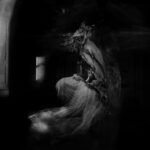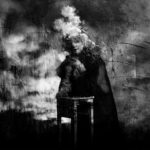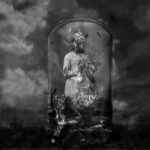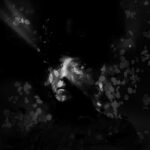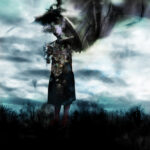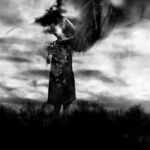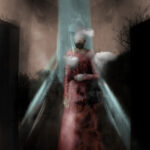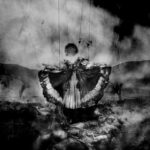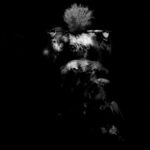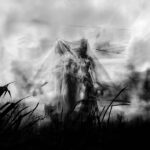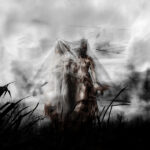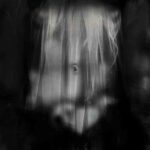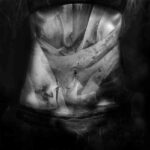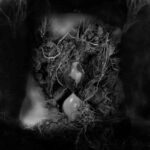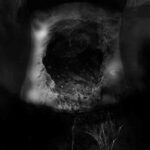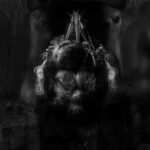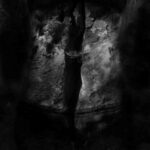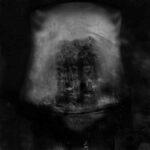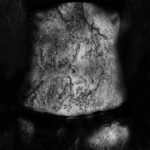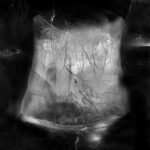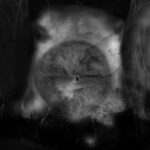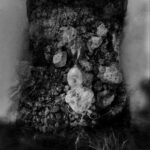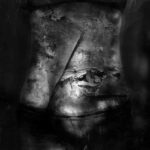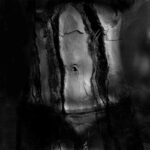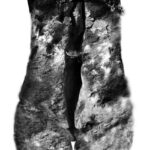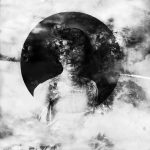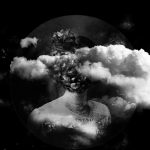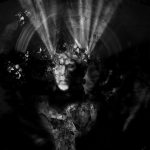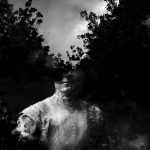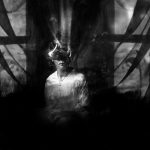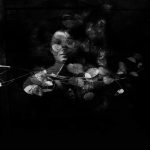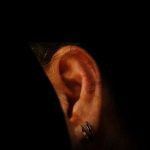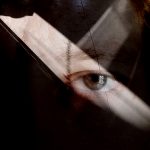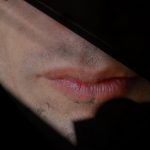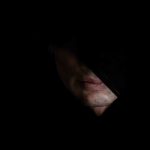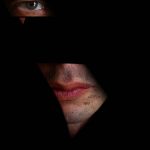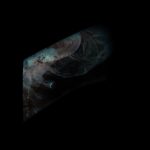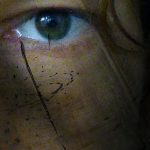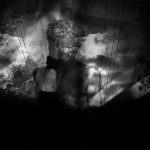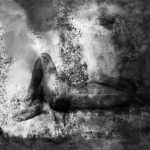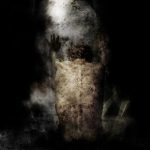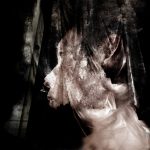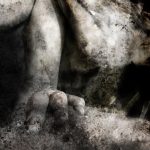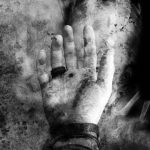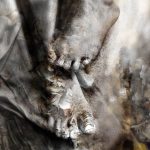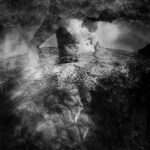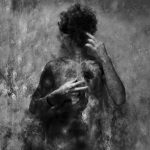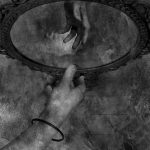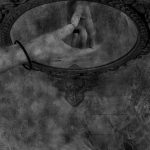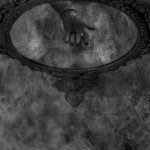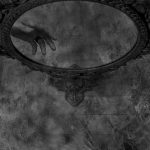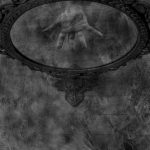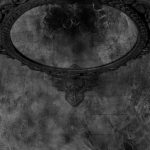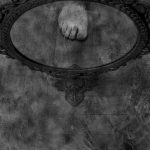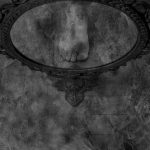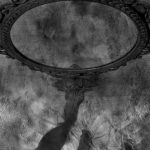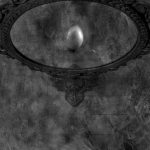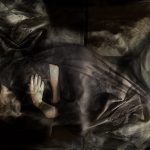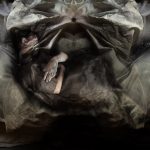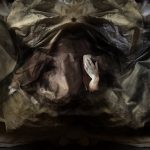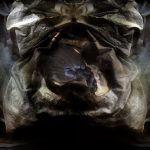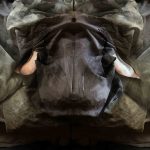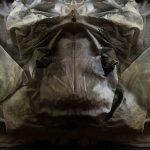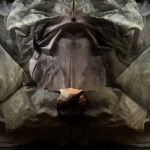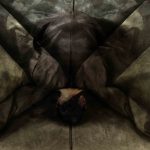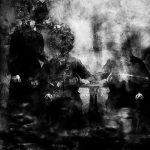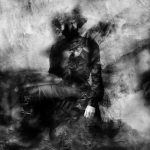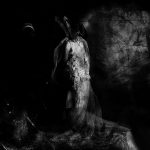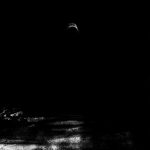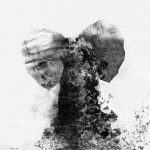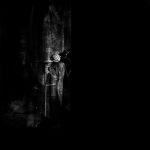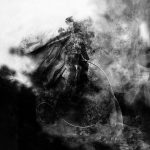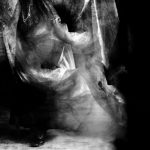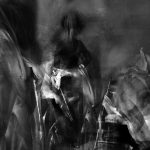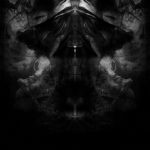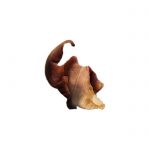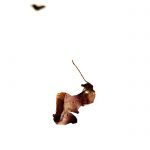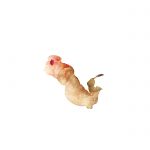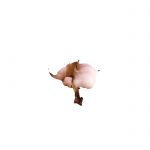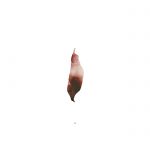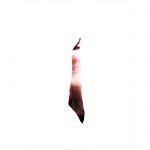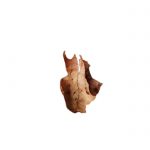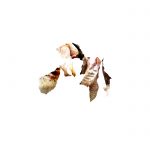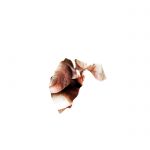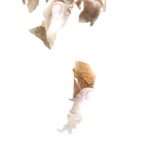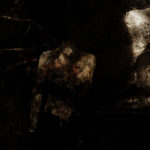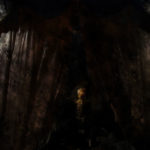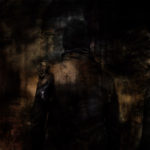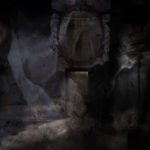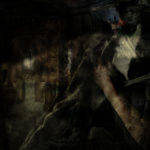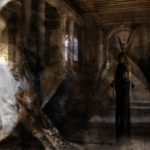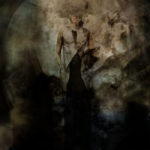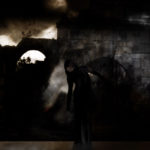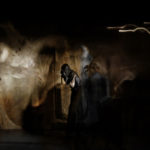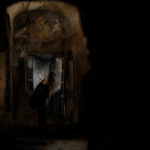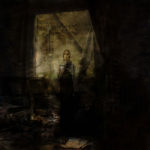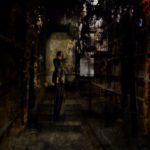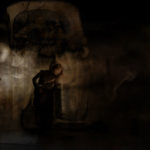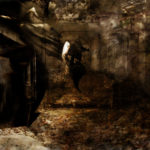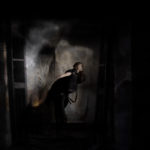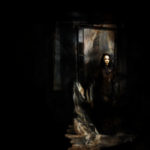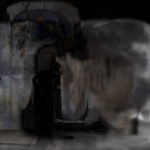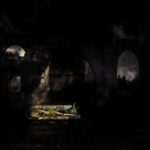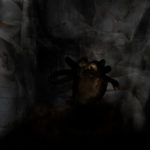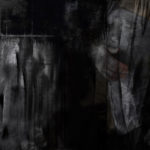WORKS
Nelle opere di Giorgio Bormida l’impostazione fotografica scompare di fronte ad un uso estremamente poetico dell’immagine che, in tal modo, si apparenta alla pittura. Così l’occhio si spinge nel cuore di un immaginario complesso e densamente stratificato di suggestioni ed esperienze.
L’autore pone l’accento sul senso delle vicende quotidiane e, per questo motivo, vicine a toccare l’esistenza e l’esperienza di chiunque. Ognuno può cogliervi segni, cenni di qualcosa che nell’animo – nella sua memoria – continua a sopravvivere al tempo.
Giorgio Bormida, in effetti, non si accontenta di scattare una foto, di racchiudere un fermo immagine colto dalla vita ma, come un pittore sulla tela, procede per velature, per lenti passaggi, un passo dopo l’altro, Ecco allora che ogni inquadratura si apre come una finestra scenica, un quadro che si fa palcoscenico (come sostiene l’autore stesso) in cui, strato dopo strato, velatura dopo velatura, la realtà si definisce e si trasforma in pura suggestione.
In Giorgio Bormida’s works, the photographic approach fades in favour of an extremely poetic use of the image, which somehow recalls painting, as it leads the viewer’s eye right to the heart of a complex imagination, densely embedded with suggestions and experiences.
The author highlights the sense of humanly daily events, which are likely to touch upon anybody’s existence and experience. Anybody can catch on signs and hints of something that keeps on outliving time in their soul, in their memory.
Giorgio Bormida, in fact, does not make do with taking pictures, with enclosing a freeze-frame of life, but, like painters on their canvas, he works with veilings, quietly, one step after the other. So every frame opens like a scenic window, a painting that becomes a stage (as the author himself claims) where, layer after layer, veiling after veiling, reality becomes clear and turns into pure suggestion.
Sono visioni emozionanti, allarmanti, indefinite come ricordi confusi di sogni, la cui consistenza è confermata dall’oggettiva fermezza fotografica.
Vi confluiscono per sovrapposizione varie notazioni, come fossero veli trasparenti che fluttuano filtrando sensazioni, immettendosi l’uno nell’altro ed evocando un’unica visione che le contiene tutte. Emergono così emozioni “indirette”, come trascrizioni di sogni cupi, paure, imprecise ossessioni subconsce, formalmente evanescenti e di bassa consistenza materica, sebbene grevi di presagi. Le sue immagini, benché misteriose, si presumono “vere” poiché fotografate e rispondono ai sensi come “reale rimotivato”.
Quanto al loro aspetto “pittorico” possiamo convenire che i pensieri non hanno colore e i sogni raramente svelano qualche squarcio cromatico indefinibile.
Queste “foto” sono azioni o pensieri visti come su un boccascena, senza delimitazioni perimetrali.
Disegno e fotografia si sommano e si intrecciano, recitano riflessioni circa la morte fisica, l’assenza coscienziale. Sono immagini cupe, negative, spesso inquietanti di storie ctonie ( che vengono dall’oscurità) che dispiegano apertamente la cultura disegnativa dell’autore.
L’offerta poetica è distinta e suggestionante, trascinante. L’invadente scimmia clickista dei telefoni-fotocamera non può fare altrettanto poiché non governa il disegno.
They are thrilling, alarming visions, indefinite like confused memories of dreams, whose consistency is confirmed by the objective photographic firmness.
Various notations come together by superimposition, as if they were transparent veils that fluctuate filtering sensations, entering one into the other and evoking a single vision that contains them all. Thus “indirect” emotions emerge, such as transcriptions of dark dreams, fears, imprecise subconscious obsessions, formally evanescent and of low material consistency, although heavy with omens.
His images, although mysterious, are presumed to be "true" because they are photographed and respond to the senses as "re-motivated real".
As for their "pictorial" aspect, we can agree that thoughts have no color and dreams rarely reveal some indefinable chromatic gash.
These "photos" are actions or thoughts seen as on a proscenium, without perimeter boundaries.
Drawing and photography add up and intertwine, reciting reflections about physical death, the absence of conscience. They are dark, negative, often disturbing images of chthonic stories (coming from the darkness) that openly unfold the author's drawing culture.
The poetic offer is distinct and suggestive, enthralling. The intrusive clickist monkey of the telephones-cameras cannot do the same since it does not govern the design.
Seguire le prove di danza della compagnia “Deos” è stata l’occasione per cercare di catturare l’energia interiore che si sprigiona dai corpi , linee nette o sfumate che sono prodotte dai movimenti, come tracce di una matita bianca su un fondo nero. Il nero stesso enfatizza le forme chiare, a volte le delinea, a volte le sfuma, ma in ogni caso ne esalta l’essenza quasi a mettere in luce il senso del movimento che esse esprimono.
Le immagini sono mute ma le forme create nella danza restituiscono il ritmo interiore dell’azione. Sono forme luminose che sembra vogliano sfondare il buio.
La staticità dell’istante sembra dilatarsi, suggerire la possibile direzione del movimento e le sue scie.
I danzatori mi hanno comunicato un messaggio di pura libertà e l’intenzione di una continua evoluzione nella espressività delle forme.
Una visione diversa della danza.
Silent action
Following the dance rehearsals of the "Deos" company was an opportunity to try to capture the inner energy that emanates from the bodies, sharp or nuanced lines that are produced by the movements, like traces of a white pencil on a black background. Black itself emphasizes the light shapes, sometimes outlines them, sometimes blurs them, but in any case it enhances their essence as if to highlight the sense of movement that they express.
The images are mute but the forms created in the dance convey the inner rhythm of the action. They are luminous shapes that seem to want to break through the darkness.
The stillness of the instant seems to expand, suggesting the possible direction of movement and its trails.
The dancers communicated to me a message of pure freedom and the intention of a continuous evolution in the expressiveness of the forms.
A different vision of dance.
- I
- II
- III
- IV
- V
- VI
- VII
- VIII
- IX
- X
- XI
- XII
- XIII
- XIV
- XV
- XVI
Quando ti svegli e cerchi di recuperare i contorni di un sogno metti insieme frammenti di immagini, di stati d’animo ed inevitabilmente li avvicini ad una rappresentazione coerente e li racconti come un quadro, come le sequenze di una storia.
Rimanere più vicino possibile a quei frammenti, trasparenze , associazioni è stata invece la direzione che ho tentato per lasciare intatte le sfumature che il sogno suggerisce, le contraddizioni e le complessità del senso che poi nella quotidianità del vissuto dobbiamo in qualche modo definire, razionalizzare, trasformare.
Significa, In sostanza, perderli, i sogni.
La nostra fragile condizione umana richiede ogni giorno la capacità di mediazione tra la fluidità di tempo e spazio del sogno e la concretezza dell’azione nelle ore di veglia, alla ricerca di precari equilibri.
“Dreams” nasce dunque da queste premesse: non vuole essere la rappresentazione di sogni vissuti nel sonno ma la ricerca della materia sottile e difficilmente tangibile dei sogni che mescola, sovrappone, sfuma i ricordi, i particolari, le sensazioni senza regole predefinite, in totale libertà, senza quello che definiamo senso comune, senza certezze consolatorie ma con un po’ di ironia.
E’ un mondo di materie sottili e fragili nel loro comporsi o dissolversi, che diventano figure o figure sono state e ritornano ad appartenere ai diversi mondi della natura madre.
When you wake up and try to recover the outlines of a dream, you put together fragments of images, of moods and inevitably you bring them closer to a coherent representation and tell them like a painting, like the sequences of a story.
Staying as close as possible to those fragments, transparencies, associations was instead the direction I tried to leave intact the nuances that the dream suggests, the contradictions and complexities of the meaning that we must then somehow define, rationalize, transform in everyday life.
It means, in essence, losing them, dreams. Our fragile human condition requires every day the ability to mediate between the fluidity of time and space of the dream and the concreteness of action in the waking hours, in search of precarious balances.
"Dreams" was born from these premises: it does not want to be the representation of dreams lived in sleep but the search for the subtle and hardly tangible matter of dreams that mixes, superimposes, blurs memories, details, sensations without predefined rules, in total freedom, without what we call common sense, without consolatory certainties but with a bit of irony.
It is a world of subtle and fragile materials in their composition or dissolution, which become figures or figures have been and return to belong to the different worlds of mother nature.
- I
- II
- III
- IV
- V
- VI
- VII
- VIII
- IX
- X
- XI
Il respiro come boccascena dell’anima e Il corpo come architettura di stati d’animo tra visibile e invisibile.
“L’immagine è una creazione pura dello spirito. […] Un’immagine non è forte perché è brutale o fantastica – ma perché l’associazione delle idee è nel contempo lontana e precisa. Il risultato ottenuto provoca un controllo diretto sulla precisione dell’associazione. […] Ciò che è grande non è l’immagine – ma l’emozione che riesce a provocare; se quest’ultima è grande, si valuterà l’immagine su questa misura.” Pierre Reverdy, “L’immagine” da “Nord- Sud”, n.13, marzo 1918.
The breath as the proscenium of the soul and the body as an architecture of states of mind between the visible and the invisible.
"The image is a pure creation of the spirit. [...] An image is not strong because it is brutal or fantastic – but because of the association of ideas is both distant and precise. The obtained result causes a direct control over the accuracy of the association. [...] What is great is not the image – but the emotion it manages to provoke; If the latter is large, the image will be evaluated. Pierre Reverdy, "The image" from "north to south”, n.13, march 1918
- 01
- 02
- 03
- 04
- 05
- 06
- 07
- 08
- 09
- 10
- 11
- 12
- 13
- 14
- 15
Questa serie di ritratti femminili è una galleria di immagini dedicate ad indagare volti e pensieri.
Natura umana, mondo vegetale, nuvole si integrano e si sovrappongono, ricordando la fugacità delle cose e nello stesso tempo infondono, in chi le osserva, una gamma di sentimenti variabili, come le nuvole, paradigma di leggerezza grazie alla propria continua metamorfosi.
Ogni foto ha la sua storia. Pur mantenendo la propria identità, cominciano a trasformarsi, a continuare a vivere in un altro modo, in un altro mondo.
La staticità della posa fotografica ottiene dinamicità con la sovrapposizione degli elementi naturalistici, restituendo una visione onirica, surreale, vicina ai nostri pensieri più profondi.
Metamorphosis : beyond the portrait
This series of female portraits is a gallery of images dedicated to investigating faces and thoughts.
Human nature, the plant world, clouds integrate and overlap, recalling the transience of things and at the same time instilling, in the observer , a range of variable feelings, such as clouds, a paradigm of lightness thanks to their continuous metamorphosis.
Each photo has its own story. While maintaining their own identity, they begin to transform themselves, to continue living in another way, in another world.
The static nature of the photographic pose obtains dynamism with the superimposition of naturalistic elements, restoring a dreamlike, surreal vision, close to our deepest thoughts.
- I
- II
- III
- IV
- V
- VI
Occhi, labbra, naso, orecchio: l’ombra definisce i particolari, escludendo la visione dell’intero.
Lo sguardo, allora tenta di ricostruire l’intero volto perché è l’ombra che qui detta legge di composizione dell’immagine.
Tanto netto e reale ciò che si vede, tanto indefinito e ipotetico quello che si può immaginare.
Tutto da ridisegnare nell’ombra.
Shadow
Eyes, lips, nose, ear: the shadow defines the details, leaving out the vision of the whole entity.
The gaze then attempts at reconstructing the entire face, as it is the shadow that establishes how to compose the image.
What we see is neat and real, just as what we can only imagine is indefinite and hypothetical.
Everything needs to be redesigned in the shadow.
- I
- II
- III
- IV
- V
- VI
- VII
E quanto Tempo rimane
delle nostre passioni, dei ricordi, dei sogni,
delle ore passate a nominare le cose
del Vento del Mare e della Terra?
Tempo per disegnare scenari?
Tempo per costruire storie?
Per raccontare la mente e il corpo degli uomini?
Bodies
And just how much Time is left
of our passions, our memories, our dreams,
of the hours spent naming things
of the Wind and the Sea and the Earth?
Time to design scenarios?
Time to build up stories?
To tell about the mind and the body of human beings?
- I
- II
- III
- IV
- V
- VI
- VII
- VIII
- IX
- X
Stiamo modificando la nostra visione dei tratti del volto che ci contraddistinguono. Solo i nostri occhi rimangono inalterati.
Anche gli sguardi sono cambiati, più tesi nel voler individuare e riconoscere in un passante un nostro amico, un conoscente, un estraneo.
Sappiamo inconsciamente che anche la nostra immagine per gli altri è diversa.
Per questi motivi lo specchio che riflette la mia immagine quando entro ed esco di casa è diventato lo strumento di un rituale con cui mi riapproprio dei miei caratteri, senza maschere.
Ogni giorno lo specchio scansiona la mia immagine, registra le minime variazioni di espressione, di umore e in un secondo mi restituisce il suo giudizio.
Naturalmente è un referto istantaneo, non durevole e definitivo, virtuale e liquido. E’ l’occhio che gestisce il taglio dell’immagine non riflessa ma osservata da un diverso punto di vista.
Ecco due modi diversi di osservare: paradossalmente lo “specchio” più veritiero è quello che riflette pensieri, emozioni, mutamenti e immagini interiori. Uno specchio in cui mi riconosco, che rende più chiari i contorni della mia identità.
Lo specchio è l’occhio che vede.
Mirror MMXX
We are modifying our vision of the face features that characterize us. Our eyes are the on-ly ones that have not changed.
Even our gazes have changed, as they have become keener to identify and recognize a friend, an acquaintance, a stranger.
Unconsciously, we know that even our image is different to the eyes of the others.
This is why the mirror that reflects my image when I get in and out of my house has become the instrument for a ritual through which I reclaim my own features, without any masks.
Every day the mirror scans my image, it records any slightest expression and mood variation, and within a second it gives me its judgement back. Obviously, it is a momentary report, which does not last long and is not definite, it is virtual and fluid.
It is the eye that manages the slant of the image which is not reflected, but rather, it is ob-served from a different perspective.
We are dealing with two different ways of observing: paradoxically, the “mirror” which turns out to be the more truthful is the one that reflects thoughts, feelings, changes and interior images. A mirror where I recognize myself, which makes the outlines of my identity clearer.
The mirror is the eye that sees everything.
- I
- II
- III
- IV
- V
- VI
- VII
- VIII
- IX
- X
Nel sogno pelle e tessuto si muovono insieme e si fondono, cedendo l’uno all’altro la propria identità, in un processo di metamorfosi. Nasce una nuova creatura: uno e non- uno, che si muove nello spazio e nel tempo con regole tutte sue, come succede nei sogni.
ODD
In dreams, skin and tissue move together and they fuse, conceding to each other their own identity, in a process of metamorphosis. A new creature originates: one and no-one, who moves in space and time with their own rules, just as it happens in dreams.
- I
- II
- III
- IV
- V
- VI
- VII
- VIII
Parents and, broadly speaking, relatives and kins. We know the names of some of them, a date written with a pen on the back of a photo, and we go back in time through the fragments of stories that fix moments of their lives. We look for traces of the invisible net that connects them to us, those similarities that relate us to them. We try to understand how we have become what we are through them. Holding old pictures in my hands, feeling their surface imagining to enter their dimension has prompted me to indulge in a respectful processing of the world of photography before colour and of that world of people that lived in it. In the collection we find the same subjects over and over again: the girl, the adult woman, the married couple, the hunters, the motorcyclist. People and objects strictly connected, so as to create the atmosphere of the time. We all have a box of old pictures and when we look at them we try to retrace the history of our origins, of the people who came before us. It is not enough to identify a body, a face. We attempt to investigate their hidden thoughts. Every detail is precious and leads our imagination.
- I
- II
- III
- IV
- V
- VI
- VII
- VIII
- IX
- X
Un ragionare sulla leggerezza: un bianco impalpabile e incorporeo si espande modellando forme dinamiche su cui gioca la luce. Quelle che forse sono state foglie galleggiano come sospese da invisibili ragnatele. Un ragionare sulla leggerezza…
Leaves
Reasoning about lightness: an impalpable and incorporeal white expands moulding dynamic shapes upon which the light plays. What might have possibly been leaves are now floating as if they were suspended by invisible webs. Reasoning about lightness...
- I
- II
- III
- IV
- V
- VI
- VII
- VIII
- IX
- X
Sospesi in un tempo fugace come una lepre, misticamente in equilibrio tra luce ed ombra, tra antico e nuovo, tra passato e presente.
Portraits
Suspended in a fleeting time like a hare, mystically balanced between light and shadow, between ancient and new, between past and present.
- I
- II
- III
- IV
- V
- VI
- VII
- VIII
Parents and, broadly speaking, relatives and kins. We know the names of some of them, a date written with a pen on the back of a photo, and we go back in time through the fragments of stories that fix moments of their lives. We look for traces of the invisible net that connects them to us, those similarities that relate us to them. We try to understand how we have become what we are through them. Holding old pictures in my hands, feeling their surface imagining to enter their dimension has prompted me to indulge in a respectful processing of the world of photography before colour and of that world of people that lived in it. In the collection we find the same subjects over and over again: the girl, the adult woman, the married couple, the hunters, the motorcyclist. People and objects strictly connected, so as to create the atmosphere of the time. We all have a box of old pictures and when we look at them we try to retrace the history of our origins, of the people who came before us. It is not enough to identify a body, a face. We attempt to investigate their hidden thoughts. Every detail is precious and leads our imagination.
- I
- II
- III
- IV
- V
- VI
- VII
- VIII
- IX
- X
They explore eyes mouth nose,
like a world to discover or recognize, reorganize in a space.
You spek your usual gestures, now familiar to me.
I'm with you, like you, in a space that is ours, with closed eyelids.
So many things yet to say, now. Can we say "in this exact moment"?
This is no more the time when the eye is the sense of all senses.
Guanti di foglie autunnali le tue dita, rami di ricordi le tue mani.
Esplorano occhi bocca naso,
come un mondo da scoprire o riconoscere, riordinare in uno spazio.
Parli i gesti abituali, che ho imparato.
Sono con te, come te, in uno spazio nostro, a palpebre chiuse.
Tante cose da dire ancora, ora. Si può dire: "in questo istante"?
Qui non è più tempo che l'occhio sia il senso di tutti i sensi.
- I
- II
- III
- IV
- V
- VI
- VII
- VIII
- IX
- X
Confecto itinere, dispositis verbis:
exordium, tempus,
exitus narrationis.
VIXI.
I lived.
That's what we say at the end.
When the journey is over and
we start building a story.
Beginning, development, end.
That's how a story is.
I lived.
Ho vissuto,
così si dice alla fine,
quando un percorso è compiuto e
si costruisce una storia,
inizio, durata, fine.
Così è un racconto.
Ho vissuto.
- I
- II
- III
- IV
- V
- VI
- VII
- VIII
- IX
- X
- XI
- XII
- XIII
- XIV
- XV
- XVI
- XVII
ma dell'eco di quello che è una rappresentazione:
la scena.
Tu guardi un'attrice che entra,
appare,
si mostra appena tra luci e ombre;
un gesto, la parola che sta, forse, per dire.
it's the echo of the play:
the stage scene.
You look at an actress: she enters,
appears,
reveals herself between lights and shadows
a gesture, maybe the word she is about to say.
無名で作者未詳のオペラで、
もっとも上演ということの反響である.つまり舞台のこと
である.
まず登場し、その後現れた女優の姿が
微かに見える.
仕草、おそらく言いそうになった言葉
As
"Through a glass darkly" Giorgio Bormida's haunting images submerge you into deep
deep time full of beauty and anxiety.
Like Dante's descent into the netherworld that is both familiar and distant.
A Venetian dungeon, an unwitnessed scream,
light and dark, past and present, stone and flesh...
Or the swampy graveyards of New Orleans with decaying
tombstones half submerged, dried blood and frangipani,
like kissing an embalmed child goodbye,
dead flowers and sandalwood, both grotesque and beautiful...
A rapture of trapped energy, the silent scream,
the unobserved observing... Shrouded in silence,
reaching into the shadows of our souls.
"Attraverso uno specchio oscuro"
le immagini tormentate di Giorgio Bormida ti sommergono nel profondo,
nel tempo profondo pieno di bellezza e di ansia.
Come la discesa di Dante agli inferi che è insieme familiare e lontana.
Un sotterraneo veneziano, un grido senza testimoni,
luce e oscurità, passato e presente, pietra e carne...
Come nei cimiteri paludosi di New Orleans in decomposizione con
lapidi parzialmente sommerse, sangue essiccato e frangipani,
come dare un bacio di addio a un bambino imbalsamato,
fiori appassiti e legno di sandalo, grottesco e bello insieme...
un rapimento di energia intrappolata, l'urlo silenzioso,
colui che e' inosservato, osserva... avvolto nel silenzio,
raggiungendo le ombre delle nostre anime.
Barbara Steele
Anxiety and beauty melt
magically, with a dynamism that leaves breathless.
Heterogeneous layers of places and times meet
to create a unique universe,
assaulting, seducing the viewer.
Theater and reality, representation and photography, dream and wake
lose their boundaries and become the dark backdrop
on which precarious spaces of gaunt figures are carved.
They stay in balance on an inner vacuum,
looking beyond what we are allowed to know by the knowledge
and the awareness of their visions,
they illuminate the reality that surrounds us.
magicamente, con una dinamicità che lascia senza fiato.
Eterogenei strati di luoghi e di tempi si incontrano
a creare un universo unico,
che aggredisce, seducendo, lo spettatore.
Teatro e realtà, rappresentazione e fotografia, sogno e risveglio
perdono i loro contorni e diventano la cupa scenografia
su cui si ritagliano spazi precari delle esili figure.
Restano in equilibrio su un vuoto interiore,
che colmano guardando al di là di ciò che a noi è consentito conoscere
e con la consapevolezza delle loro visioni,
illuminano la realtà che ci circonda.
Gionata Zarantonello
CREDITS
Barbara SteeleGianfranco Padovani
Gionata Zarantonello
Obscur
Oskar Perlskog
Rolando Paolo Guerzoni
Studio Berné
Teatro Valdoca
COURTESY
Opera II-XIX | Obscur AW12 menStarring: Wiktor Hansson
Opera III | Obscur AW12 men
Starring: Suad Ahmeti
Opera V | Obscur SS12 women
Starring: Erika Fehre
Opera VI-VIII-IX-X-XII-XIII-XV-XVII |
Obscur AW12 women
Starring: Inna Nechyporenko
Opera VII-XI | Obscur SS12 women
Starring: Fanny Claude
Opera XIV | Obscur AW11 men
Opera XVI | Starring: Barbara Steele
Opera XVIII | Starring: Leonardo Delogu,
Lo spazio della quiete, Teatro Valdoca.
Photocredit: Rolando Paolo Guerzoni
- I
- II
- III
- IV
- V
- VI
- VII
- VIII
- IX
- X
- XI
- XII
- XIII
- XIV
- XV
- XVI
- XVII
- XVIII
- XIX
- XX
La trasformazione è qui, adesso, oltre lo stupore che mi ridesta, oltre le cortine che mi avvolgono come ragnatele di ricordi, trame di voci, eco di storie.
Il sogno è linfa del mondo visibile, pulviscolo attraversato dalla luce a rischiarare scene quotidiane. E’ sogno davvero, quello del totale abbandono in una culla arborea, è un respiro regolare fino a quel punto che già sapevo di raggiungere, quel dettaglio che era radice del tutto. Ora la vista si apre. Appare e scompare un’immagine come a dirmi: vieni o stai?
Dunque, sognando, devo scegliere se stare o volare via, tornare alla vita, ricominciare da capo, nel senso del corpo e nell’aria che sento, tendendo il braccio fuori.
The transformation is here, now, beyond the wonder that wakes me up, beyond the curtains that wrap me up like webs of memories, plots of voices, echoes of stories.
The dream is the world's visible sap, dust pierced through by the light that brightens daily scenes. It's a real dream, the dream that makes you completely abandon in an arboreal cradle, it is the regular breathing, up to the point that I knew I would reach, the detail that was the root of it all. Now the view opens wide: an image appears and disappears as if it was asking me: are you coming or not?
Thus, while I'm dreaming, I have to choose whether to stay or to fly away, go back to life, start again from scratch, in the sense of my body, and the air that I feel when I stretch my arm out.
今、私を目覚めせる驚きのかなたで、まるでくもの巣のように私を包みこむ記憶や
声や緯糸や物語のこだまのカーテンの向こうで変化が起こっている。夢は実世界の
活力であり、日常の情景を照らす光を通して見える塵である。木のゆりかごの中に
完全に置き去りにされているのは本当は夢なのだ。今、視界がひらく。「こっちへ
来るの,そこに留まるの」と問いかけるているかの如く映像が見え隠れする。体中
の感覚と自分を取り囲む空気の中で両手をいっぱいに広げて、夢を見ながら留まる
か飛び去るか、生き返るのか、最初からやり直すのか、選ばねばならない。
- I
- II
- III
- IV
- V
- VI
- VII
- VIII
- IX
- X
- XI
- XII
- XIII
- XIV
- XV
- XVI
- XVII
- XVIII
- XIX
- XX
- XXI
- XXII
- XXIII
- XXIV
- XXV
- XXVI
- XXVII
- XXVIII
- XXIX
- XXX
- XXXI
- XXXII
- XXXIII
- XXXIV
- XXXV
- XXXVI
- XXXVII
- XXXVIII
- XXXIX
- XL
- XLI
- XLII
Le sette visioni del gatto
猫の七視覚
- I
- II
- III
- IV
- V
- VI
- VII
Questa è storia, come sempre, di cambiamenti, di mutamenti interiori.
Se è vero che i numeri sono percepiti come entità astratte,
è anche vero che nella nostra vita di mortali essi sono intrisi di sangue:
sono per esempio le date che segnano gli eventi e il corso della nostra vicenda umana,
sono i valori della nostra salute o del nostro disagio.
Questi sono i numeri della forbice che taglia le mie arterie e i pensieri,
della lama che trafigge i miei occhi,
della benda che stritola la mia voce,
della bilancia che non pesa più niente di quel che rimane,
i numeri delle mie stesse dita che squarciano il torace per sapere
cosa c’è dentro…
e poi i numeri della piuma che pesa l’anima e il valore della vita.
This is a story, as usual, of changes, of internal transformations.
If it is true that numbers are perceived as abstract entities,
it is also a fact that in our lives, as mortal beings, numbers are bloodsoaked:
they are, for example, the dates that mark the events and paths of our human condition,
the values responsible for our wellbeing or our discomfort.
These are the numbers of the scissors that cut my arteries and my thoughts,
of the blade that pierces through my eyes,
of the bandage that chokes my voice,
of the scales that don't weigh anything of my remains,
the numbers of my own fingers that rip my chest open to find out what is hidden inside...
and the numbers of the feather that weighs the soul and the value of life.
これは、ありふれた内面的な変化や変貌の物語である。
数字は、抽象的な評価値として知覚されているも事実なら、いずれは死に至る我々人類の生
活において血臭に帯びているのも又事実である。例えば事件や我々人類の生活における様々
な出来事の記録、又あるいは我々の健康状態や、困難の評定数値などである。
私の動脈も思想も切るはさみの数であり、
私の目を貫く刃の数、
私の声を押しつぶす包帯の数、
残されたものを、もはやを計ることができない天秤の数、
内部に何があるか知りたいがために胸を引き裂く自分の指の数、そして魂の重さと人生の価
値を量る羽の数である。
- I
- II
- III
- IV
- V
- VI
- VII
- VIII
- IX
- X
- XI
- XII
- XIII
- XIV
- XV
- XVI
- XVII
- XVIII
- XIX
- XX
- XXI
La mente, all’interno, dove si formano le immagini più nostre, appena si formano i pensieri disegnati: questo ho cercato di indagare.
Il luogo è dentro i miei occhi, con imprecisi contorni neri e il momento non è l’istante, ma una sovrapposizione di istanti disegnati là.
Ovvio che il percorso sia apparentemente cupo, che le immagini condividano territori vicini al sogno, storie vissute o sognate.
Animali alberi corpi architetture si fondono, fino ad assumere una identità precisa.
A volte sono solo brandelli, ma sfondano i confini del buio, senza rispetto delle proporzioni o dei colori con cui li vediamo all’esterno.
Nel mondo della memoria la visione è dinamica, cessano le convenzioni, i punti cardinali.
La dimensione temporale qui dentro non vale: occorre seguire il lento emergere delle forme, al di là di ogni istante fotografico.
Le 21 icone qui presentate sono da leggere come appunti: immagini ed emozioni interiori, proprio come si affacciano alla nostra mente al loro primo nascere, complesse, oscure, piene di significati che solo poi, quando ricostruiremo una storia fatta di parole tenteremo di giustificare, per dire che sappiamo capire e controllare il mondo.
The mind, inside, where our innermost images take shape, the very
moment when our drawn thoughts arise: this is what I’ve tried to investigate.
The place is in my eyes, with black vague boundaries. Time is not a frozen instant, it's a flow of overlapping moments as they are drawn.
Indeed the path is apparently dark, and the images share landscapes bordering on dreams,
stories that have been lived or just dreamt of.
Animals, trees architectures, bodies merge to take a neat identity.
Sometimes they are only debris, but they break through the boundaries of darkness,
without the symmetries or the colours seen from outside.
In the world of memory vision is dynamic: conventions, cardinal points disappear.
The temporal dimension does not matter here: it is necessary to follow the slow emergence of the forms, beyond any photographic instant.
The 21 icons represented here are meant to be read as notes: inner images and emotions, the way they first appear to our mind when they are just born, complicated, obscure, full of meanings which only later we will try to justify, when we reconstruct a story made of words, so that we can state that we can understand and control the world.
自己本来のイメージが作り出され思考が構想される、内脳について研究を試みた。
場所は自分の目の中の曖昧な黒いふちに囲まれた所であり、時はある一瞬ではないが、そこに描かれた数々の瞬間の重なりである。
明らかに表面的にその行程は陰鬱であり、映像は夢や実話あるいは空想の話の領域にまたがっている。
動物、植物、建築物などが、確立したアイデンティティーを呈するまで融合しあう。
記憶の世界においてビジョンは躍動的であり、慣例や基点もその意味を持たなくなる。
時間的感覚も失われる。写実的な瞬間を飛び越え、徐々に出現してくる形を追随する必要がある。
今回提示する21のイコンは我々の精神の中で生まれたばかりの内部感情やイメージのメモとして読んでもらいたい。最初は不明瞭で複雑に思われるかも知れないが、やがて深く観察すれば理解してもらえるはずである。
- I
- II
- III
- IV
- V
- VI
- VII
- VIII
- IX
- X
- XI
- XII
- XIII
- XIV
- XV
- XVI
- XVII
- XVIII
- XIX
- XX
- XXI
















